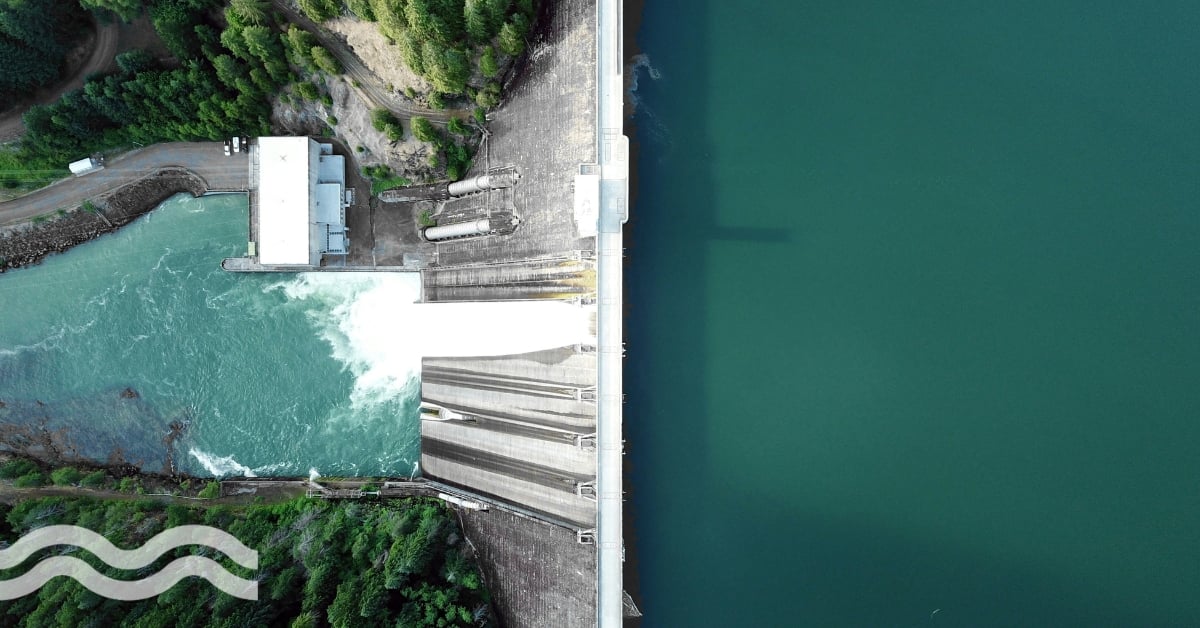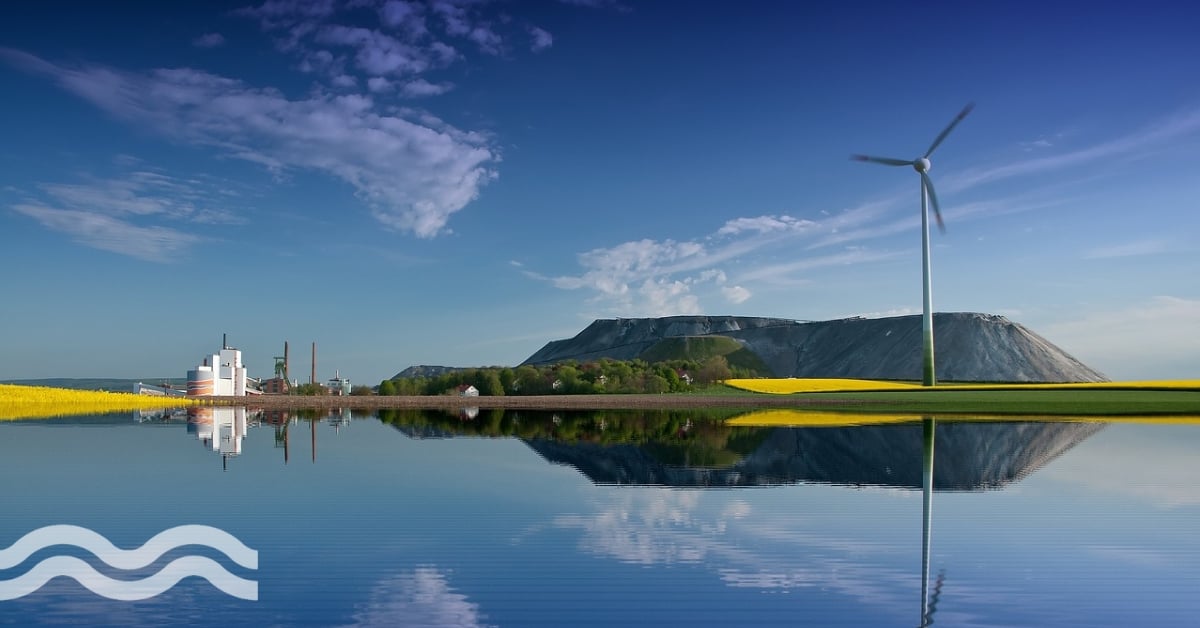Water treatment: Our essential guide to water treatment technology
Table of contents
- What is water treatment?
- How does the water treatment process work?
- Six essential Water treatment technologies
- UV water treatment: shining a light on disinfection
- Ozone water treatment: harnessing the power of lightning
- Types of water treatment chemicals (and why they are used)
Water treatment and water treatment technologies are an essential line of defence to remove contaminants and bacteria before the delivery of clean, potable water supplies for consumption. Water sources can be subject to contamination and therefore require appropriate treatment to remove disease-causing agents. Public drinking water systems use a variety of methods to provide safe drinking water for their communities. Depending on the continent, country and region, different water treatment systems may be in operation depending on regional regulations and raw water input. The following article provides an overview of the basic principles of water treatment and the processes and technologies involved.
Water treatment: mimicking earth’s hydrological cycle
What is water treatment?
Maintaining water treatment to ensure a clean supply to meet growing global populations has been an ongoing challenge throughout human history.
Thanks to significant technological developments in water treatment, including monitoring and assessment, high-quality drinking water can be supplied and enjoyed around the world. Replicating the earth’s hydrological cycle in which water is continuously recycled, treatment enables the same water to be cleansed through several natural processes.
To ensure they do not present a health risk, nearly all water sources require treatment before they can be consumed. Many treatment systems are designed to remove microbiological contamination and physical constituents, including suspended solids (turbidity). Following this, a final disinfection stage is nearly always included at the end of the treatment process to help deactivate any remaining microorganisms. If a persistent disinfectant, such as chlorine, is added this can also act as a residual to help prevent biological regrowth during water storage or distribution in larger systems.
Water treatment consists of several stages. This can include the initial pre-treatment by settling or through using coarse media, filtration followed by chlorination, called the multiple barrier principle. The latter allows effective water treatment and allows each stage to treat and prepare water to a suitable quality for the next downstream process. For example, filtration can prepare water to ensure it is suitable of UV (ultraviolet) disinfection.
Depending on the quality and type of the water entering a water plant, treatment may vary. For example, groundwater treatment works abstract water from below ground sources such as aquifers and springs. These sources tend to be relatively clean in comparison to surface water, with fewer water treatment steps required.
Surface water treatment works take water from above ground sources, such as rivers, lakes and reservoirs. This raw water is subject to direct environmental input. As a result, multiple treatment steps are required and individual processes are required that will enable the configuration of different comabinations to clean and finally disinfect the abstracted water.
Some water supplies may contain disinfection by-products, inorganic chemicals, organic chemicals and radionuclides. As a result, specialised water treatment methods may also be part of water treatment to help control formation and removal.
Furthermore, under renewed regulations, tighter limits could be placed on endocrine disrupting chemicals as well as lead limits being halved.
How does the water treatment process work?
Coagulation, flocculation and sedimentation are processes used to remove colour, turbidity, algae and other microorganisms from surface waters.
Chemical coagulants can be added to the water for the formation of a precipitate, or floc to entrap these impurities. After sedimentation and/or filtration, the floc is separated from the treated water
Aluminium sulphate and ferric sulphate are two of the most commonly used coagulants , although others are available. Raw water quality near to the inlet of a mixing tank or flocculator determines the rate in which coagulants are dosed in solution.
By adding coagulant at a point of high turbulence, it is rapidly and thoroughly dispersed on dosing. The next stage is the sedimentation tank. Here aggregation of the flocs takes, which settle out to form sludge that will need to be removed.
One of the advantages of coagulation ais that it reduces the time required to settle out suspended solids. Furthermore, it can be very effective in removing fine particles that are otherwise very difficult to remove.
The cost and the requirement for accurate dosing, thorough mixing and frequent monitoring, are often cited as the principal disadvantages of using coagulants for treatment of small supplies. Bench scale coagulation tests can be used to determine which coagulant to use for a specific raw water.
As a result, to remove colour and turbidity, coagulation and flocculation are considered the most effective treatment techniques. However, for small water supplies they may not be suitable. This is due to the level of control required and volumes of sludge generated.
Six essential Water treatment technologies
A variety of water treatment technologies are needed to work together, in sequence, in order to purify raw water before it can be distributed. Here is a list of basic technologies often used in water treatment works.
- Screens
Screens are used on many surface water intakes to remove particulate material and debris from raw water. Weeds and debris can be removed using coarse screens, whereas smaller particles including fish can be removed using band screens and microstrainers. Ahead of coagulation or subsequent filtration, microstrainers are used as a pre-treatment to reduce solids loading.
- Gravel filters
Turbidity and algae can be removed using gravel filters, which consist of a rectangular channel or a tank divided into several sections and filled with graded gravel (size range 4 to 30mm). An inlet distribution chamber allows the raw water to enter through and flow horizontally through the tank, encountering first the coarse and then the finer gravel. An outlet chamber collects the filtered water with solids being removed from the raw water accumulate on the floor of the filter.
- Slow sand filters
Turbidity, algae and microorganisms can also be removed using slow sand filters. A simple and reliable process, slow sand filtration is often suitable for the treatment of small supplies provided that sufficient land is available. Slow sand filters usually consist of tanks containing sharp sand (size range 0.15-0.30mm) to a depth of between 0.5 to 1.5m.
- Activated carbon
Using physical adsorption, contaminants can be removed using activated carbon. This will be affected by the amount and type of the carbon, the nature and concentration of the contaminant, retention time of water in the unit and general water quality (temperature, pH, etc.).
One of the mocst common mediums is granular activated carbon (GAC), although powdered activated carbon (PAC) and block carbon are also sometimes used. Filter media is contained in replaceable cartridges and a particulate filter at the outlet of the cartridge is used to remove carbon fines from the treated water.
- Aeration
Aeration is designed to transfer oxygen into water and remove gases and volatile compounds by air stripping. A common method is packed tower aerators as a result of their compact design and high energy efficiency. To achieve air stripping various techniques can be used including counter current cascade aeration in packed towers, diffused aeration in basins and spray aeration.
- Membrane processes
Reverse osmosis (RO), ultrafiltration (UF), microfiltration (MF) and nanofiltration (NF) are the most commonly used membranes for water treatment processes. Previously applied to the production of water for industrial or pharmaceutical applications, membranes are being applied to the treatment of drinking water. Membrane processes can provide adequate removals of pathogenic bacteria, Cryptosporidium, Giardia, and potentially, human viruses and bacteriophages. In a notable case study, companies from the Netherlands and Denmark are working on integrating enzymes into membrane technology for the removal of pesticides and pharmaceutical residues from drinking water.
UV water treatment: shining a light on disinfection
Invisible to the human eye, ultraviolet (UV) light can be used to disinfect microorganisms in water treatment processes. The wavelengths of UV light range between 200 and 300 nanometers (billionths of a meter). Ultraviolet radiation is produced at 254 nm from special low-pressure mercury vapor lamps. This is the optimal wavelength for disinfection and ozone destruction. Categorised as germicidal, this means they are capable of inactivating microorganisms, such as bacteria, viruses and protozoa. It's important to note that UV lamps never have contact with the water; they can be mounted external to the water which flows through UV transparent Teflon tubes or housed in a quartz glass sleeve inside the water chamber.
How does it work? The wavelengtsh of UV light render bacteria, viruses and protozoa incapable of reproducing and infecting.
UV disinfection can be used for the primary disinfection technology of potable drinking water. Futhermore, the process can also be used as a secondary form of disinfection. For example, against microorganisms, such as Cryptosporidium and Giardia, which can be chlorine-resistant.
In addition, UV light (either alone or in conjunction with hydrogen peroxide) can destroy chemical contaminants such as pesticides, industrial solvents, and pharmaceuticals through a process called UV-oxidation.
Under ideal conditions, a UV unit can provide greater than 99% reduction of all bacteria. However, even with this performance, ultraviolet disinfection has two potential limitations: “point” disinfection and also cells not being removed.
"Point" Disinfection can occur if the UV units only kill bacteria at one point in a watering system and do not provide any residual germicidal effect downstream. If just one bacterium passes through unharmed (100% destruction of bacteria cannot be guaranteed), there is nothing to prevent it from attaching to downstream piping surfaces and proliferating.
Secondly, a second limitation can be if bacteria cells are not removed in a UV unit but are converted into pyrogens. The killed microorganisms and any other contaminants in the water are a food source for any bacteria that do survive downstream of the UV unit.
One notable development to UV systems is the scaling up of light-emitting diode technology, known as UV-LED, with 2018 witnessing a tipping point on power density and purchasing price.
Ozone water treatment: harnessing the power of lightning
Like a lightning storm, ozone is created when oxygen is exposed to the discharge of a powerful electric current through air. While widely used in Europe for many years to treat municipal drinking water, it has not had a similar acceptance in the US.
Ozone can be used throughout water treatment, for example during pre-oxidation, intermediate oxidation or final disinfection as it has excellent disinfection and oxidation qualities. Usually, it is recommended to use ozone for pre-oxidation, before a sand filter or an active carbon filter (GAC). Following ozonization these filters can remove the remaining organic matter (important for final disinfection).
Ozonation is carried out by an electric discharge field as in the CD-type ozone generators, or by ultraviolet radiation (UV-type ozone generators). Ozone can also be achieved through electrolytic and chemical reactions, in addition to commerical methods.
In general, an ozonation system includes passing dry, clean air through a high voltage electric discharge, i.e., corona discharge, which creates and ozone concentration of approximately 1% or 10,000 mg/L. In treating small quantities of waste, the UV ozonation is the most common while large-scale systems use either corona discharge or other bulk ozone-producing methods.
Raw water is then passed through a venturi throat which creates a vacuum and pulls the ozone gas into the water or the air is then bubbled up through the water being treated. Since the ozone will react with metals to create insoluble metal oxides, post filtration is required.
Ozone is highly reactive and, as a result, has a very short half-life once dissolved into water. The natural reaction is for ozone to return to its oxygen form, with a reaction time typically taking 10-20 minutes at 20 degrees Celsius.
Advantages to ozone water treatment include the minimisation of inorganic, organic and microbiological problems and taste and odour problems. Furthermore, no additional chemicals are added to the water.
Meanwhile disadvantages include a lack of germicidal or disinfection residual to inhibit or prevent growth. Furthermore, the system may require pre-treatment for hardness reduction.
Types of water treatment chemicals (and why they are used)
Chemical disinfection of drinking-water includes any chlorine-based technology, such as chlorine dioxide, as well as ozone, some other oxidants and some strong acids and bases. Except for ozone, proper dosing of chemical disinfectants is intended to maintain a residual concentration in the water to provide some protection from post-treatment contamination during storage.
Disinfection of household drinking-water in developing countries is done primarily with free chlorine, either in liquid form as hypochlorous acid (commercial household bleach or more dilute sodium hypochlorite solution between 0.5% and 1% hypochlorite marketed for household water treatment use) or in dry form as calcium hypochlorite or sodium dichloroisocyanurate. This is because these forms of free chlorine are convenient, relatively safe to handle, inexpensive and easy to dose.
Chlorine is the most widely used primary disinfectant and is also often used to provide residual disinfection in the distribution system. Monitoring the level of chlorine in drinking water entering a distribution system is normally considered to be a high priority (if it is possible), because the monitoring is used as an indicator that disinfection has taken place. Residual concentrations of chlorine of about 0.6 mg/l or more may cause problems of acceptability for some consumers on the basis of taste.
Chlorine dioxide breaks down to leave the inorganic chemicals chlorite and chlorate. These are best managed by controlling the dose of chlorine dioxide applied to the water. Chlorite can also be found in hypochlorite solution that has been allowed to age.
Proper dosing of chlorine for household water treatment is critical in order to provide enough free chlorine to maintain a residual during storage and use. Recommendations are to dose with free chlorine at about 2 mg/l to clear water (< 10 nephelometric turbidity units [NTU]) and twice that (4 mg/l) to turbid water (> 10 NTU).
Monochloramine, used as a residual disinfectant for distribution, is usually formed from the reaction of chlorine with ammonia. Careful control of monochloramine formation in water treatment is important to avoid the formation of di- and trichloramines, because these can cause unacceptable tastes and odours.
A number of other chemicals may be added in treatment. These include substances such as sodium hydroxide for adjusting pH and, in certain circumstances, chemicals for fluoridation of drinking-water.
Related content
We promise never to send you spam and you can unsubscribe at any time!



